Overview
Keratoconus is a cornea ectatic disorder characterized by progressive non-inflammatory corneal thinning and steepening. The cornea is the transparent front layer of the eye normally shaped like a dome and it is largely responsible for the clear vision that we experience.
Learn More About Keratoconus Here
Treatment Options For Keratoconus
Collagen Cross-Linking
Collagen Cross-linking (CXL) is a therapeutic procedure that improves the biomechanical properties of the cornea. It was first utilized in 1998 in Germany and it involves the use of Riboflavin (vitamin B) and Ultraviolet A (365nm) radiation to form additional covalent bonds between the collagen molecules found in the cornea stroma, the middle layer of the cornea where the bulk of cornea tissues reside.
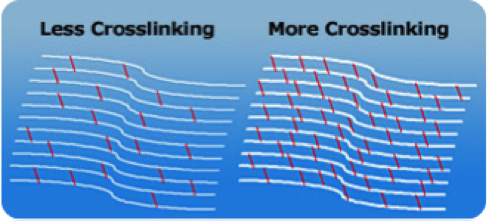
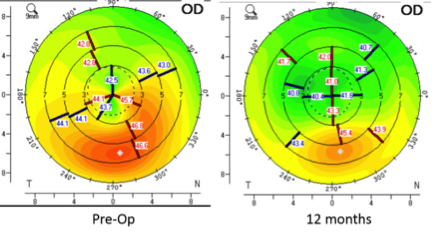
This procedure aims to stiffen and strengthen the cornea to stabilize its biomechanics and halt the progression of cornea ectatic disorders including Keratoconus and post-LASIK ectasia.
It is a minimally invasive in-clinic procedure with low incidence of complications and side effects. Common side effects include foreign body sensation, light sensitivity and vision fluctuation whilst complications include the risk of infection and corneal haze. There are no reported cases of secondary changes to the cornea, lens (e.g. Cataract) and retina due to UVA radiation.
In cases of more severe ectasia, CXL is utilized in conjunction with other treatment options such as Intra-corneal Ring Segment (ICRS) to stabilize the cornea.
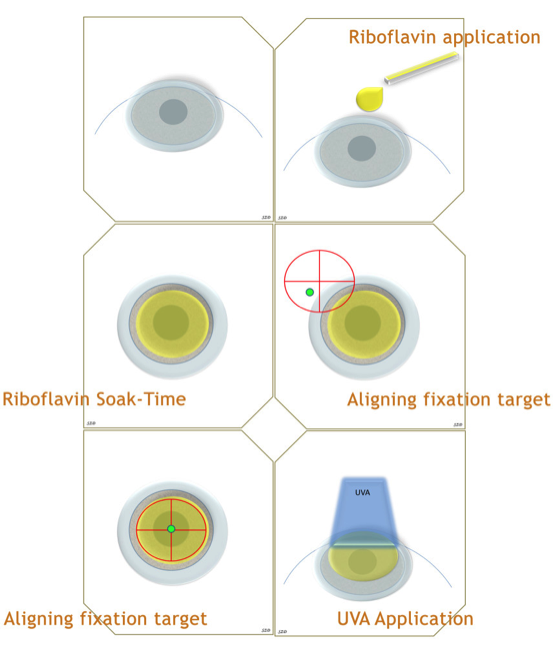
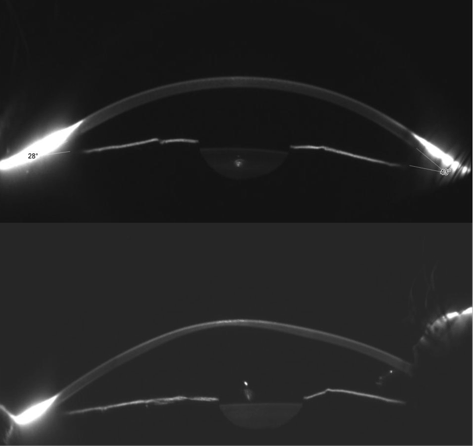
In Keratoconus, the biomechanical properties of the cornea tissue are weaker and this results in the cornea bulging forward to form a cone shape. This conical protrusion causes visual distortion that may not be satisfactorily corrected with visual aids such as spectacles and contact lenses.

Since keratoconus is a usually a progressive disease (gets worse with time) it’s important to have an early diagnosis so eye doctors have the opportunity to properly treat the disease. Book an appointment with us.
Intrastromal Corneal Ring Segments (ICRS)
ICRS is a therapeutic approach conceptualized in the 1950s for Keratoconus management. It involves a series of arc-like rings with various thickness, arc length and optical center inserted into the deeper stromal layer of the cornea. It is made of Polymethy-Methacrylate (PMMA), a biocompatible and optically excellent polymer employed in the manufacturing of intraocular lens since 1949.

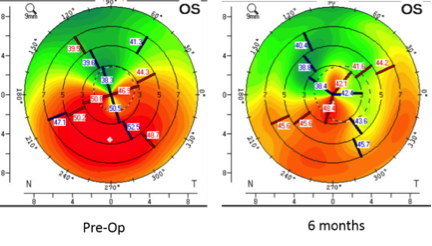
ICRS is a safe, reversible and effective approach that serves as a viable alternative to more invasive techniques such as corneal transplantation. ICRS attempts to improve visual functions to an acceptable limit, improve contact lens tolerance and delay or eliminate the need for corneal transplantation. It works by displacing corneal tissues around the ectatic area upwards to create a flatter and more regular cornea surface. This in-turn results in a reduction in refractive error and optical aberration. In addition, the rings stabilize the corneal biomechanics and reduce the progression of ectasia.
In addition to using collagen cross-linking to strengthen the cornea, our Amaris excimer laser machine is able to customize laser ablation treatments for patients with irregular corneas. Such patients often have blur and poor quality vision due to the irregular astigmatism caused by the irregular corneal shape. The excimer laser machine helps by ablating the cornea to create a regular corneal shape.
ICRS are surgically inserted into the cornea with the aid of a bladeless Femtosecond laser. It is an in-clinic procedure performed under topical anesthesia..
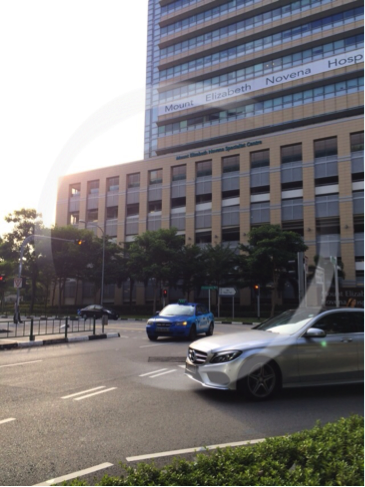
Side effects of ICRS include foreign body sensation, light sensitivity, glare and halos and vision fluctuation. In some cases, the rings may be seen as a ‘translucent arc’ at the peripheral vision. Complications include epithelial defects, infectious keratitis (0.2%), cornea oedema, white deposits at the ring edges and displacement of the ring segments.
The rings are placed in the eye for an indefinite time and there have been no reported cases of rejection or degradation over time. In cases of more severe ectasia, ICRS are utilized in conjunction with Collagen Cross-linking to improve the biomechanics of the cornea.
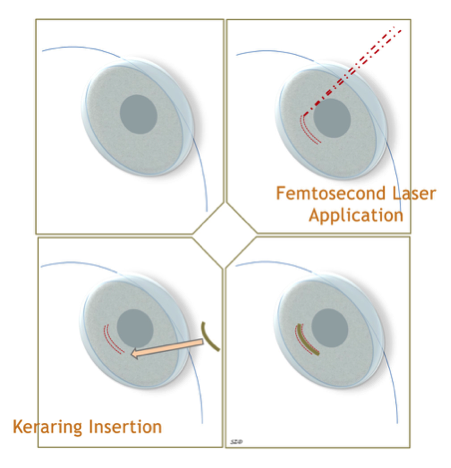
Why Choose EEC for Keratoconus treatment?
Being a one-stop comprehensive eye specialist centre in Singapore, we provide all forms of Keratoconus treatments available in the market today. Call Eagle Eye Centre today to learn more about suitable options.
If you’ve been diagnosed with keratoconus, call Eagle Eye Centre today to learn more about our treatment options for keratoconus.
If you feel you suffer from keratoconus, contact Eagle Eye Centre today to discuss your treatment options. Remember, the early detection of this disease is essential to stopping the progression. Keratoconus does not have have a cure, only treatments to stop progression.
